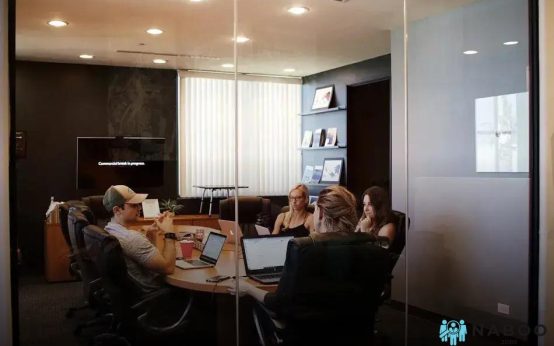Miscommunication at work can lead to frustrating and counterproductive outcomes. Understanding how to handle miscommunication is crucial for maintaining a positive work environment. This blog explores various techniques to address communication breakdowns effectively. From recognizing common miscommunication causes to implementing actionable communication strategies, you’ll learn practical steps to cultivate a culture of open dialogue and active listening. By utilizing feedback and refining your communication skills, you can enhance collaboration and productivity within your team.
Identifying Common Miscommunication Causes
Miscommunication in the workplace can stem from various sources, and spotting these issues is the first step in resolving them. Language barriers are a common cause, where differences in language proficiency lead to misunderstandings. Even among speakers of the same language, interpretation errors may arise due to regional dialects or unfamiliar jargon.
Another major factor is assumptions. When team members assume others understand their thought process or objectives without clear articulation, messages become muddled. Additionally, unclear messages due to lack of detail or direction can confuse recipients, complicating tasks and workflows.
Poor listening practices contribute significantly to miscommunication. Employees frequently hear selective information or fail to engage attentively, missing critical details that lead to errors. Moreover, technological barriers such as email glitches, misused communication tools, or insufficient training on new platforms can exacerbate misunderstandings.
Identifying these root causes is crucial for implementing effective communication strategies later on. It’s worth noting that emotional factors can amplify communication gaps when stress or personal conflicts overshadow professional dialogue. By recognizing these elements, teams can better navigate and mitigate common miscommunication issues, fostering a more harmonious and efficient work environment.
Effective Communication Strategies
To address miscommunication in the workplace effectively, it’s crucial to develop strong communication strategies. One effective approach is to prioritize clarity in all communications. This means using simple, direct language and avoiding jargon, which can often lead to confusion. Additionally, practicing empathy by considering the perspective of the listener can significantly enhance understanding.
Another critical strategy involves establishing regular communication channels. This can include scheduled meetings, clear email protocols, or collaborative platforms that ensure everyone is on the same page. Consistent communication helps prevent misunderstandings and keeps team members informed.
Additionally, adopting visual aids, such as charts or slides, can help convey complex ideas more clearly. It ensures that the message is not only heard but also understood.
It’s also essential to encourage feedback. By creating an environment where people feel safe to voice their thoughts and clarifications, communicators can adjust their messages accordingly and ensure accurate understanding. This cultivates an atmosphere of trust and openness.
Furthermore, setting communication norms and expectations can guide the team on preferred methods of communication, tone, and timing, all of which reduce potential miscommunication.
The Role of Active Listening
Active listening plays a crucial role in minimizing misunderstandings in the workplace. It’s not just about hearing the words spoken; it involves processing the message fully and interpreting it correctly.
Active listening requires being fully engaged in the conversation. This means paying attention to the speaker without interruptions, reflecting on what is being said, and asking clarifying questions if necessary. Through this approach, assumptions are reduced, and the true intent of the message is better understood.
One technique within active listening is mirroring, where the listener repeats back what they have heard in their own words. This not only shows that the listener is paying attention but also allows for any misunderstandings to be quickly addressed. For example, saying, “So, what I’m hearing is…” can be very effective.
Empathy also plays a vital role in active listening. Understanding the emotional context behind words can often provide essential insights into the speaker’s perspective. By considering the emotions and the message content together, communication becomes more effective and less prone to errors.
Moreover, minimizing distractions is important to ensure that communication stays clear. This means putting down phones or closing laptops when someone is speaking to show that their words are valued. Creating an environment where distractions are minimized helps everyone involved concentrate better.
Benefits of Active Listening
- Improves understanding and clarity;
- Creates trust between colleagues;
- Encourages open and honest dialogue;
- Facilitates a more collaborative work environment.
By incorporating these active listening techniques, individuals and teams can reduce miscommunications and foster a more cooperative and harmonious workplace.
Utilizing Feedback for Improvement
In the workplace, effectively utilizing feedback can be transformative. Feedback provides an opportunity for growth and a clearer understanding of where miscommunication may arise. Feedback loops allow teams to address moments of unclear communication promptly. By regularly seeking input, teams can refine processes and clarify misunderstandings before they escalate.
An essential practice is conducting regular check-ins. These meetings should encourage honesty and constructive criticism. Effective feedback should be specific and focused on behaviors rather than personal attributes to prevent defensiveness. Employees can improve when they know exactly what actions need modification.
Furthermore, training staff on how to give and receive feedback benefits the entire organization. Workshops or seminars can equip employees with tools to handle sensitive discussions. Role-playing scenarios can also be a helpful method to practice delivering feedback in a constructive manner.
Encourage a proactive approach where employees feel comfortable asking for feedback. This invites open communication and reduces the stigma around needing assistance or improvement. Additionally, it’s crucial to recognize and reinforce positive actions. Acknowledge when team members successfully implement feedback to improve communication, fostering a supportive environment.
By integrating feedback mechanisms within the work culture, teams not only address present miscommunication issues but also build a foundation for future improvement. As feedback becomes a regular part of the workflow, employees learn to view it as a helpful tool rather than a criticism.
Creating a Culture of Open Dialogue
Creating a culture of open dialogue within the workplace is critical for minimizing miscommunication and fostering better relationships among team members. Establishing a safe space where employees feel comfortable expressing their thoughts and concerns plays a pivotal role in effective communication. Encouraging openness helps in identifying and clearing up any miscommunication, allowing teams to work more harmoniously.
To create such a culture, it is vital to promote transparency and honesty. Open dialogue supports team members in sharing different perspectives which can lead to innovative solutions and improved team dynamics. By encouraging everyone to speak up, you empower them, reducing instances of misunderstanding and tension.
Another essential aspect is building trust. Trust is the backbone of open communication, ensuring that team members feel secure to voice their ideas and feedback without fear of judgment or repercussions. Trust can be nurtured through consistent and genuine communication from leadership and peer-to-peer interactions.
Fostering Inclusivity
Everyone on the team should have equal opportunity to express themselves. It’s important to practice active listening and validate each person’s input. This approach encourages quieter team members to become more involved, facilitating a free exchange of ideas.
Setting regular meetings dedicated to open conversation can also aid. These sessions should focus not just on problem-solving but on encouraging dialogue where team members feel heard and appreciated. Managers and team leaders play a significant role in modeling this behavior, highlighting its importance to overall productivity and team morale.
By consistently practicing these principles, companies can cultivate an environment where open dialogue is the norm, ultimately leading to a more cohesive and efficient workplace.




